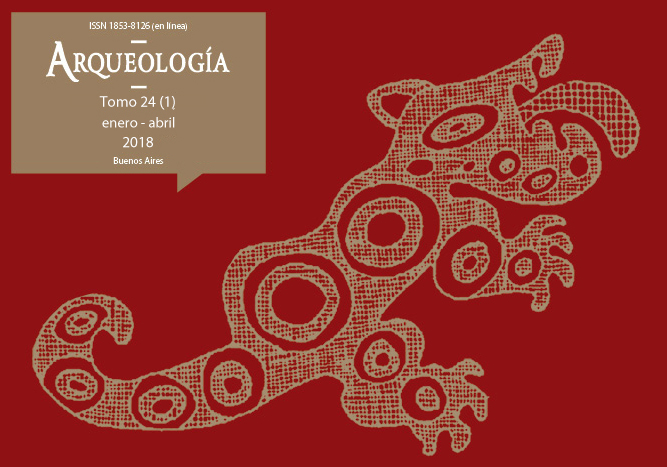Aligned urns: study of a pre-hispanic funerary context from a sector of the Tucumán lowlands (Argentina)
Keywords:
Archaeology of death, Lowlands, Burials in urns, Argentine Northwest
Abstract
In this paper, we present the analysis of a funerary context composed of four urns arranged in line from the Anta Yacu 2 site, located in the area of Horco Molle (Department of Yerba Buena, Tucumán). The methodological strategy consisted in the excavation and registration of the internal contents of the urns and the analysis of the recovered materials (pottery, human bones), with the objective of establishing the main characteristics of funerary practices in this sector of the piedmont of Tucumán. The results suggest that these urns (rough and unrefined) contained the skeletal remains of four young individuals, which would have been buried around 200 BC as secondary inhumations. Finally, other similar cases previously reported for the Tucumán-Salta piedmont are reviewed and integrated, and some implications for this type of burials are discussed.Downloads
Download data is not yet available.
How to Cite
Miguez, G. E., Caria, M. A., Muntaner, A. C., González Baroni, L. G., Guerrero, R. A., & Barazzutti, M. J. (1). Aligned urns: study of a pre-hispanic funerary context from a sector of the Tucumán lowlands (Argentina). Arqueología, 24(1), 53-75. https://doi.org/10.34096/arqueologia.t24.n1.4226
Section
Articles
Authors who publish in this journal agree to the following conditions:
- Authors retain copyright and yield to the journal right of first publication with the work registered with attribution license Creative Commons, which allows third parties to use the published always mentioning the authorship of the work and first publication in this magazine.
- Authors can make other independent and additional contractual arrangements for the non-exclusive distribution of the version of the article published in this issue (p. Eg., Inclusion in an institutional repository or publish it in a book), provided that clearly indicate that the work was published for the first time in this magazine.
- It allows and encourages the author / s to publish their work online (eg institutional or personal pages) before and during the process of revision and publication, as it can lead to productive exchanges and greater and more rapid dissemination of work published (See The Effect of Open Access).





(1)13.png)






1.jpg)
1.jpg)


13.png)
1.png)


(1)1.png)









